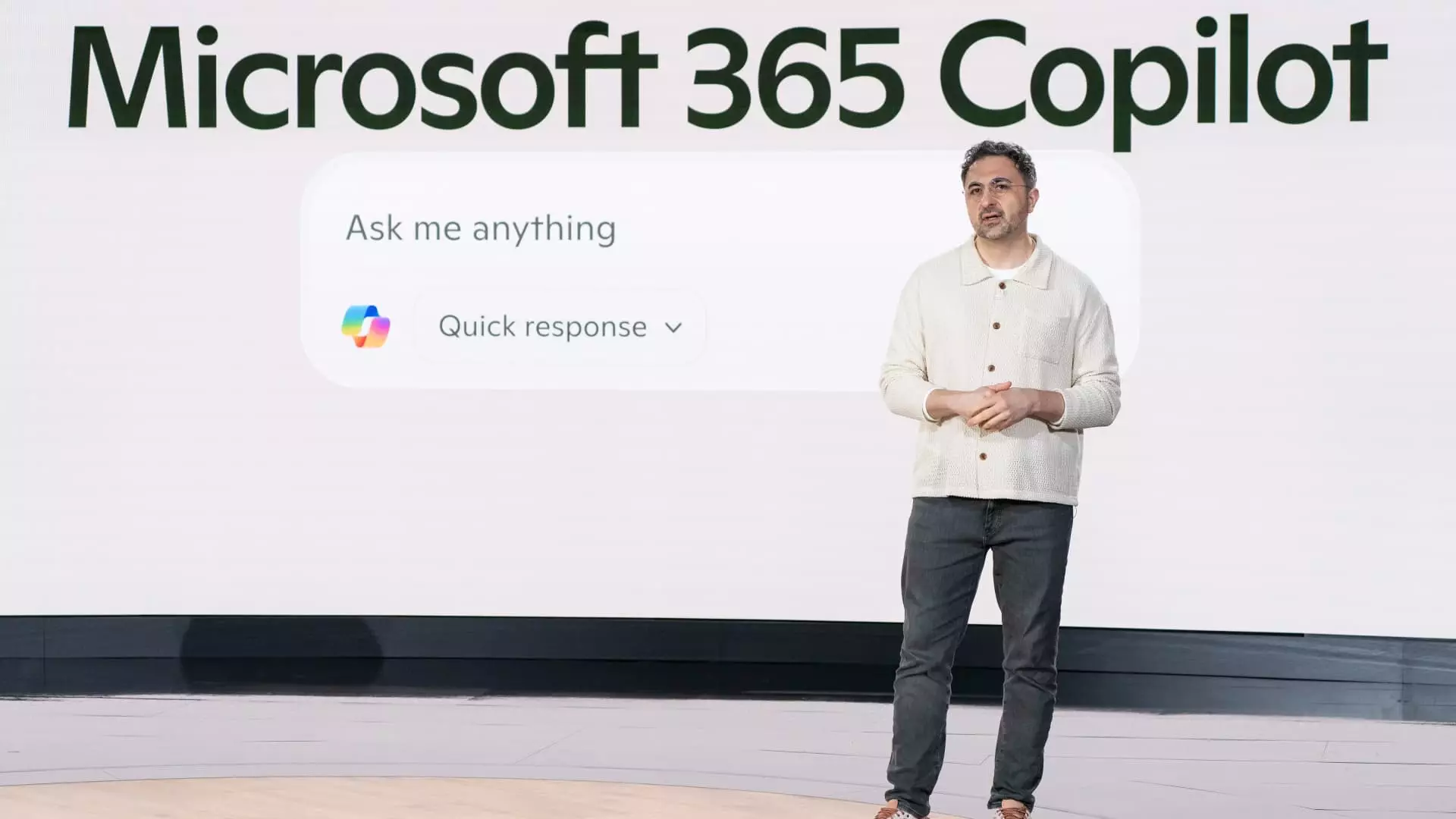In an era where technological progress is often viewed through the lens of who can innovate the fastest, Microsoft’s strategy under the leadership of Mustafa Suleyman stands out as a testament to the power of patience and strategic restraint. With a formidable arsenal of Nvidia graphics processing units at its disposal, the company has opted not to plunge into the race of pioneering cutting-edge artificial intelligence models. Instead, Suleyman has articulated a well-reasoned philosophy that champions a “wait and see” approach, allowing Microsoft to learn from the early developments of others before committing resources to build AI solutions that are not only cost-effective but finely tuned to specific applications.
This prudent direction is not just a matter of cutting costs; it involves a deeper insight into the technological landscape and the advantages that can be gained from understanding early iterations of AI models. By allowing the “frontier” players to take the initial risks and absorb the associated costs of innovation, Microsoft positions itself to deliver more refined and practical solutions tailored to user requirements. This so-called “off-frontier” strategy allows the tech giant to concentrate on delivering high-quality output, avoiding the pitfalls of being the first to market with untested innovations.
The Legacy of DeepMind and New Beginnings
Mustafa Suleyman is no stranger to the evolving world of artificial intelligence. As a co-founder of DeepMind, which Google acquired for a significant sum, his experience brings significant weight to Microsoft’s AI endeavors. Having transitioned from his role as CEO of Inflection to Microsoft’s AI division, Suleyman’s leadership encapsulates a blend of entrepreneurial spirit and corporate strategy. Microsoft’s recent positioning emphasizes the importance of partnerships as vital for growth, particularly its ongoing collaborations with organizations like OpenAI and CoreWeave.
These relationships allow Microsoft to tap into external expertise and technological advancements without straining its internal resources. The company has heavily invested in OpenAI, pouring $13.75 billion into the startup. This alliance has propelled Microsoft’s platforms to integrate powerful AI features, such as those found in Bing and Windows, while Microsoft’s own innovations—like the evolving capabilities of Copilot—are subtle yet impactful. Copilot will soon feature a memory function, enhancing user interaction by recalling critical information, echoing innovations initially introduced in OpenAI’s ChatGPT.
Emerging Challenges and Competitive Landscape
Nevertheless, the dynamics between Microsoft and OpenAI are not without tensions. As OpenAI dives into partnerships with other tech giants, including Oracle, the solidity of their alliance appears to be tested. This shift signals a broader trend within the cloud and AI sectors—companies are becoming more competitive as they seek independent sources of technological growth. Microsoft has even categorized OpenAI as a competitor, highlighting a shift in the relationship. Despite these challenges, Suleyman is emphatic about the long-term benefits of the partnership, indicating that the strategic alliance will remain a cornerstone of Microsoft’s ambitions until at least 2030.
With the increasing complexity of AI technologies and their societal implications, Microsoft’s emphasis on building internal capabilities shows a proactive stance on the future of AI. The company is adamant about developing self-sufficiency, ensuring its long-term viability without full reliance on external partners. This balance of collaboration and autonomy signifies a mature understanding of the industry’s landscape, allowing Microsoft to navigate potential disruptions effectively.
The Future of Microsoft’s AI Endeavors
Suleyman’s strategic outlook fosters a culture within Microsoft that values sustainable and responsible AI development. As artificial intelligence continues to evolve, the company’s commitment to not chasing the latest technological fads reflects an understanding that the true value lies in deepening technological competency rather than merely being a follower or a front-runner. Microsoft’s formidable AI capabilities, backed by significant computational resources, affirm its intention to remain a major player in the field without the reckless pursuit of being first.
Microsoft’s calculated delay in AI model development is indicative of a thoughtful strategy rather than a lack of innovation. By focusing on concrete applications and forming vital partnerships, particularly within its framework with OpenAI, Microsoft is laying a foundation that could potentially redefine its competitive stance in the years to come. The road ahead is complex and multifaceted, but through Suleyman’s leadership, there’s a sense that Microsoft is poised to maneuver through it with foresight and resilience.

